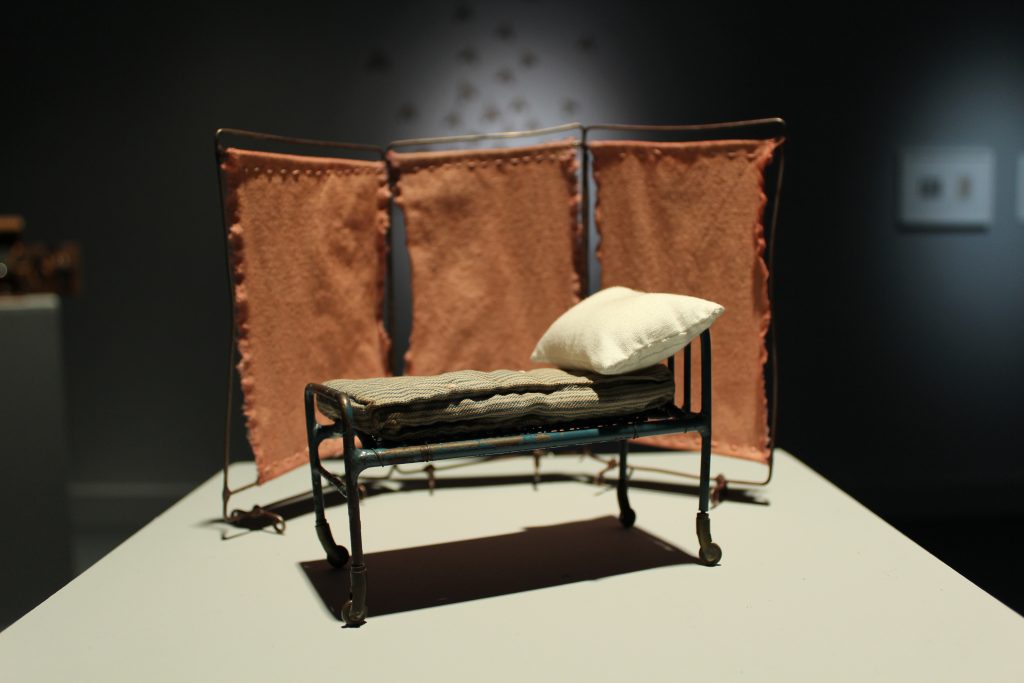“Rest, Rest, Rest!” (2014) takes the form of a tiny altered antique toy hospital bed and screen which are impregnated with the extracted tuberculosis (TB) DNA and dyed with natural dyes, which were historically used as treatments for the disease. It is part of Anna Dumitriu’s Romantic Disease series.

Until the discovery of the antibiotic Streptomycin in 1943, there was no effective treatment for TB and medical treatments were directed towards enhancing the immune systems of sufferers through a regime of rest, regular meals and rest and fresh air. Calculations were made as to the number of breaths required to perform specific tasks and patients would be confined to bed, sometimes in just one position until they recovered, rebelled or succumbed.
Until the discovery of the antibiotic Streptomycin in 1943 there was no real treatment for tuberculosis (TB) and medical treatments were directed towards enhancing the immune systems of sufferers through a regime of regular meals and rest and fresh air. Some of the rest regimes were very extreme, such as artificially collapsing lungs in order to rest them. Calculations were made as to the number of breaths required to perform specific tasks and patients would be confined to bed, sometimes in just one position until they recovered, rebelled or succumbed.
Hospitals, called sanatoria, for TB patients sprang up, especially in mountainous areas in the false belief that the thinner air at high altitudes was beneficial to treating TB or warmer climates based on the assumption that avoiding damp cold conditions would help control the disease by avoiding other infections that might further weaken the patient. Removing infectious patients from the wider population was also a benefit of the system.
Many sanatoria sprang up around Europe. Especially popular for the wealthy were those in Switzerland. In the UK, Ventnor on the Isle of Wight became the popular destination of the TB sufferer. The train from London to the town was nicknamed ‘The Invalid Express’ and boarding houses and hotels for patients covered the steep cliff of the famous resort. The massive Royal National Hospital for Consumption and Diseases of the Chest with its famous motto above the door ‘dum spiro spero’ (while I breath, I hope) was built there in 1869 and demolished one hundred years later after the advent of antibiotics had rendered it unnecessary.
The work is part of Anna Dumitriu’s project “The Romantic Disease“, which investigates mankind’s strange relationship with the Tuberculosis, from early superstitions about the disease, through the development of antibiotics, to the latest research into whole genome sequencing of bacteria. Supported by The Wellcome Trust.
